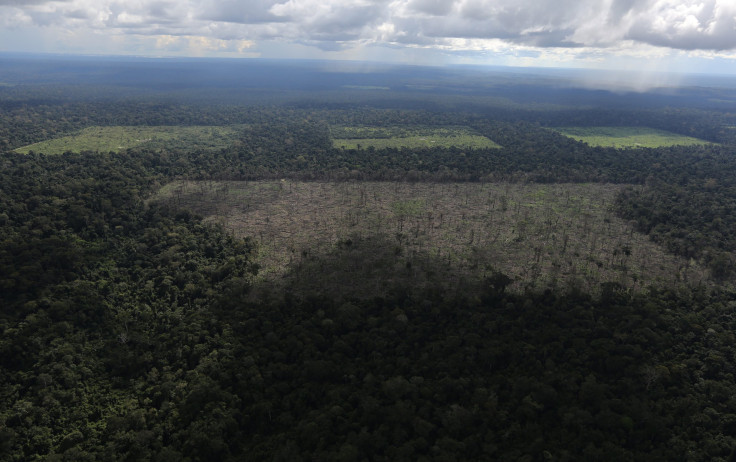Light Pollution Affects Rainforest Regrowth By Altering Bat Behavior, ‘Dark Refuges’ Needed For Light-Sensitive Species

Between 2000 and 2005, more than 50,000 square miles of tropical rainforest were lost to deforestation in Brazil alone, a country that holds 30 percent of the remaining rainforest on the planet. Scientists studying the regeneration of forests lost to agriculture and development say one of the largest barriers to forest regrowth is light pollution.
According to a study published in the British Ecological Society's Journal of Applied Ecology, light pollution affects the foraging habits of nocturnal bats and the rate at which rainforest plants recolonize the land. Researchers say fruit-eating bats play a critical role in dispersing seeds for new forest growth, but artificial light from street lamps and other sources may compromise the way bats feed.
The study calls for establishing light-free refuges to allow light-sensitive species to forage freely.
"In tropical habitats bat-mediated seed dispersal is necessary for the rapid succession of deforested land because few other animals than bats disperse seeds into open habitats," Daniel Lewanzik, a Ph.D. student at the German Leibniz Institute for Zoo and wildlife Research in Berlin and lead author of the study, said in a statement.
The same has been proven true for bats whose diets consist mostly of insects. Previous studies have shown that insect-feeding bats tend to avoid foraging in light-polluted areas. This new study is the first to suggest that the same is true for fruit foragers.
To test this, researchers working in the tropical rainforest of Costa Rica conducted two experiments. The first consisted of dividing a flight cage into two compartments, one that was naturally dark and one that was illuminated by a sodium street lamp, the most common type of street lighting in the world. Researchers offered the bats in each compartment of the cage a tasty meal of pepper plants, nightshade and figs.
They found that bats flew into the dark side of the cage twice as often as into the light side.
A second experiment involved illuminating wild pepper plants with a street light. Scientists then measured the percentage of fruit the bats harvested from the lit plants versus plants that were in the dark. The results of their experiment showed that bats harvested only 78 percent of the ripe fruit from the plants lit by street lamps, whereas 100 percent of the fruit on the dark plants was eaten.
"It could be that bats get dazzled by the light," Lewanzik told Live Science. "The eyes are adapted to work best at low light intensities, such that the eyes might need some minutes after being exposed to bright artificial lights to recover and to function again."
Researchers call for creating “dark refuges” connected by corridors of dark forest to accommodate light-sensitive species like bats.
© Copyright IBTimes 2024. All rights reserved.






















